Countries of the World
“Countries of the World” published by H.P. Gibson & Sons, Ltd, c.1939.
Countries of the World card game published by H.P. Gibson & Sons, Ltd as part of their International Series, c.1939. There are three separate series of cards, covering the various countries around the world. Series No.1 has 12 sets of countries, each set having a map (keycard) and associated information cards listing the main features of that country and which make the complete set. The number of cards in each set varies depending on the importance or size of each country. See the Rules►
Series No. 1: the 12 Maps - click image to see sample of associated information cards
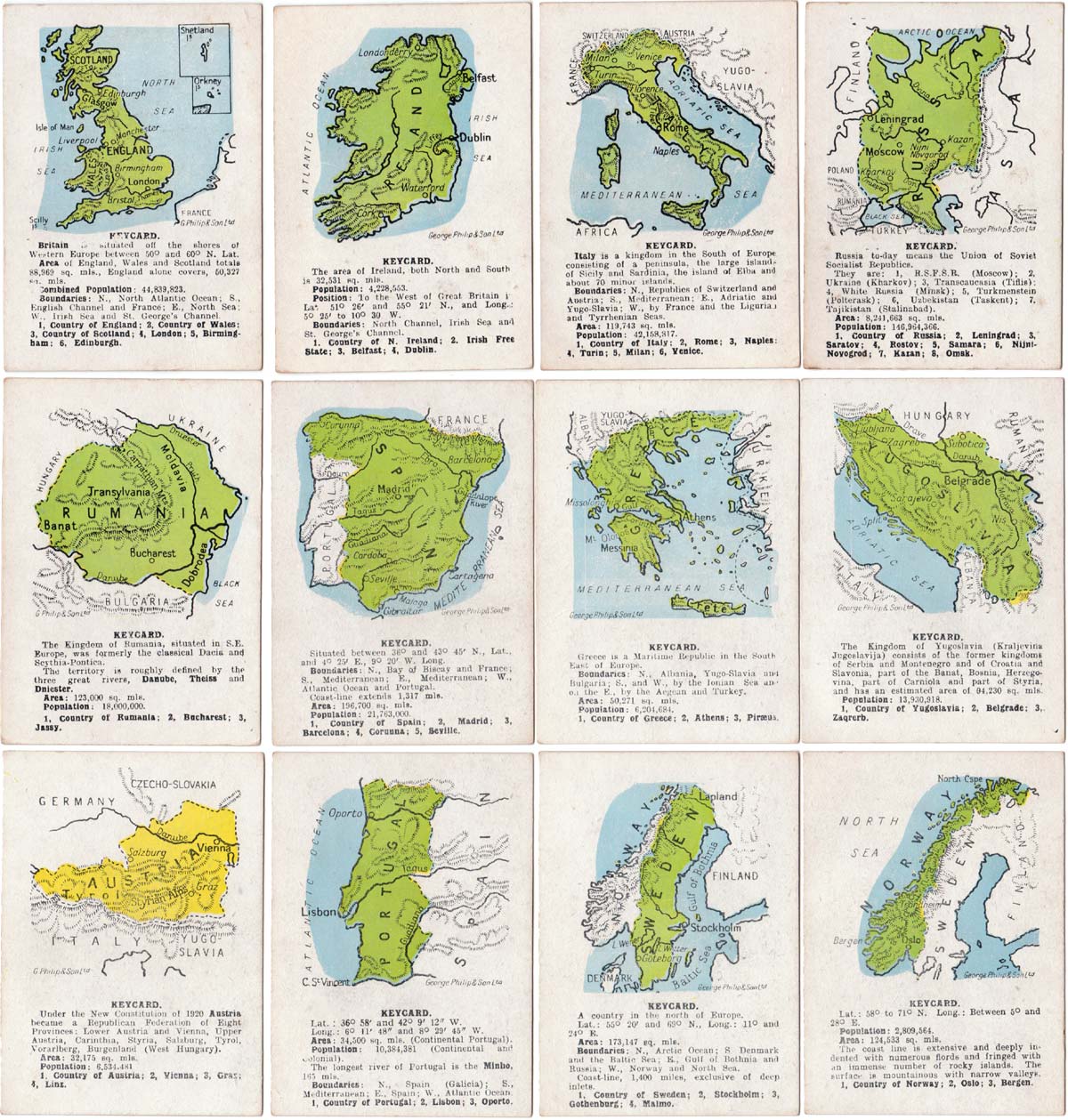
Above: 12 keycards with maps from the 1st series of “Countries of the World” published by H.P. Gibson & Sons, Ltd, c.1939. Click image to see sample of associated information cards. Total of 64 cards + rules leaflet in box.
Series No. 2: the 12 Maps - click image to see sample of associated information cards
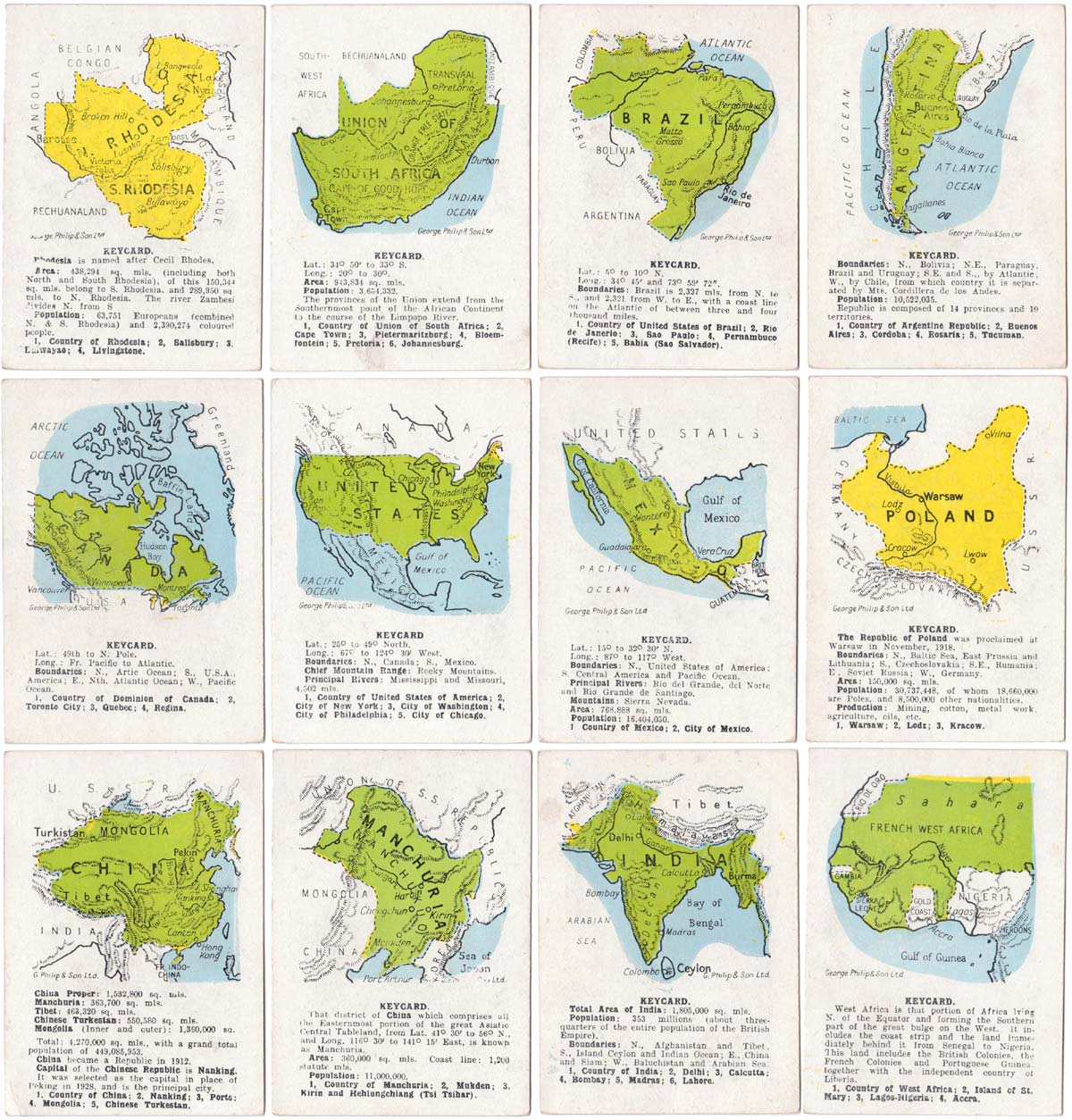
Above: 12 keycards with maps from the 2nd series of “Countries of the World” published by H.P. Gibson & Sons, Ltd, c.1939. Click image to see sample of associated information cards. Total of 64 cards + rules leaflet in box.
Series No. 3: the box and 12 Maps
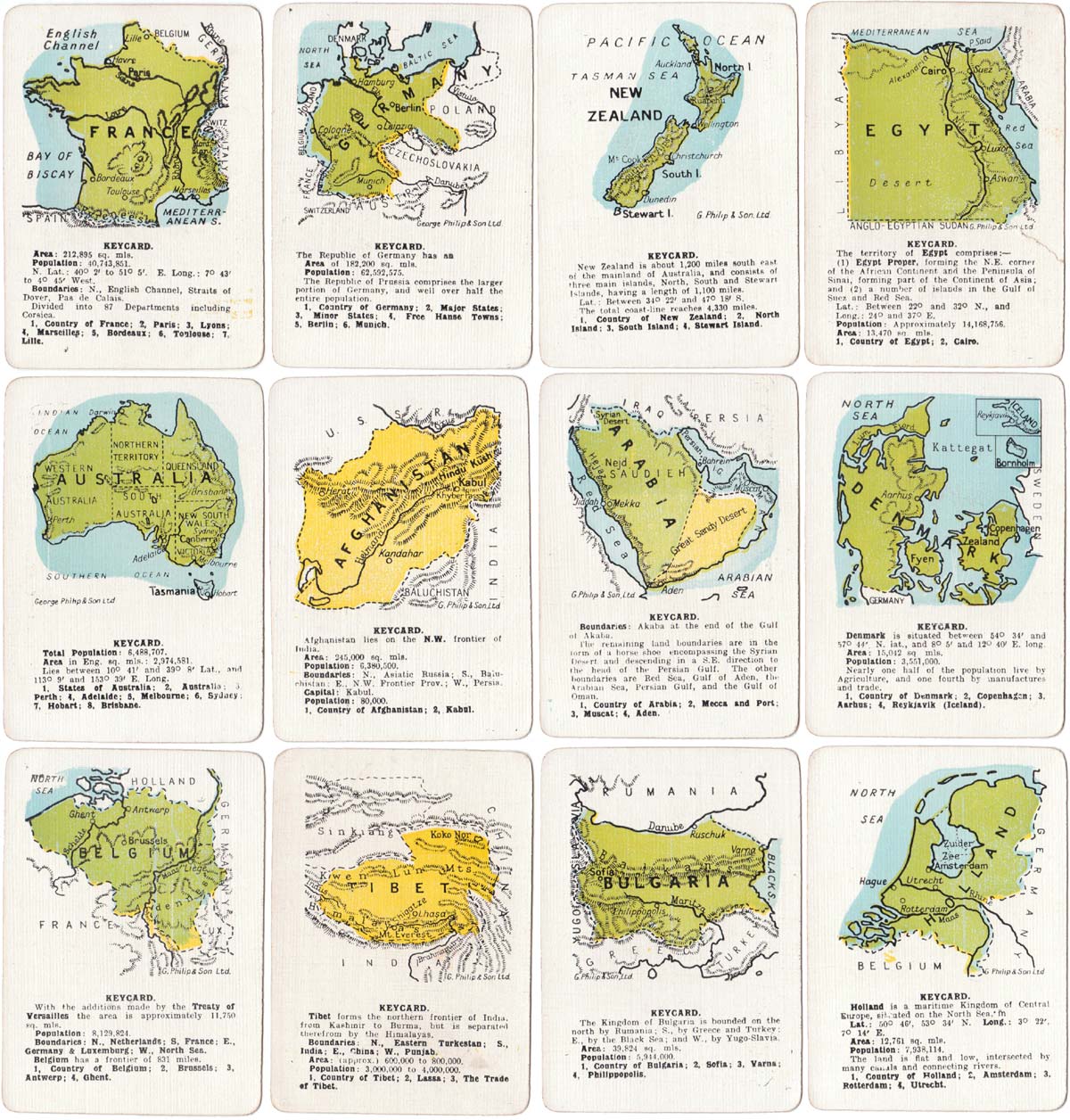
Above: 12 keycards with maps from the 3rd series of “Countries of the World” published by H.P. Gibson & Sons, Ltd, c.1939. Click image to see sample of associated information cards. Total of 64 cards + rules leaflet in box.
As far as the yellow coloured countries are concerned they seem to be countries whose sovereignty might have been questioned and indeed later were annexed by other countries. For instance Tibet which always regarded Tibet as theirs after Britain let go of it and was only taken over officially in 1950 (I remember it well when the Dalai Lama had to flee for his life to the UK). Austria was about to be Anshlussed. Poland would become a target for Germany.
The International Series brand continued to be used on some products until early 1980s, competing against other established names such as Chad Valley, Spear’s and Waddington’s.
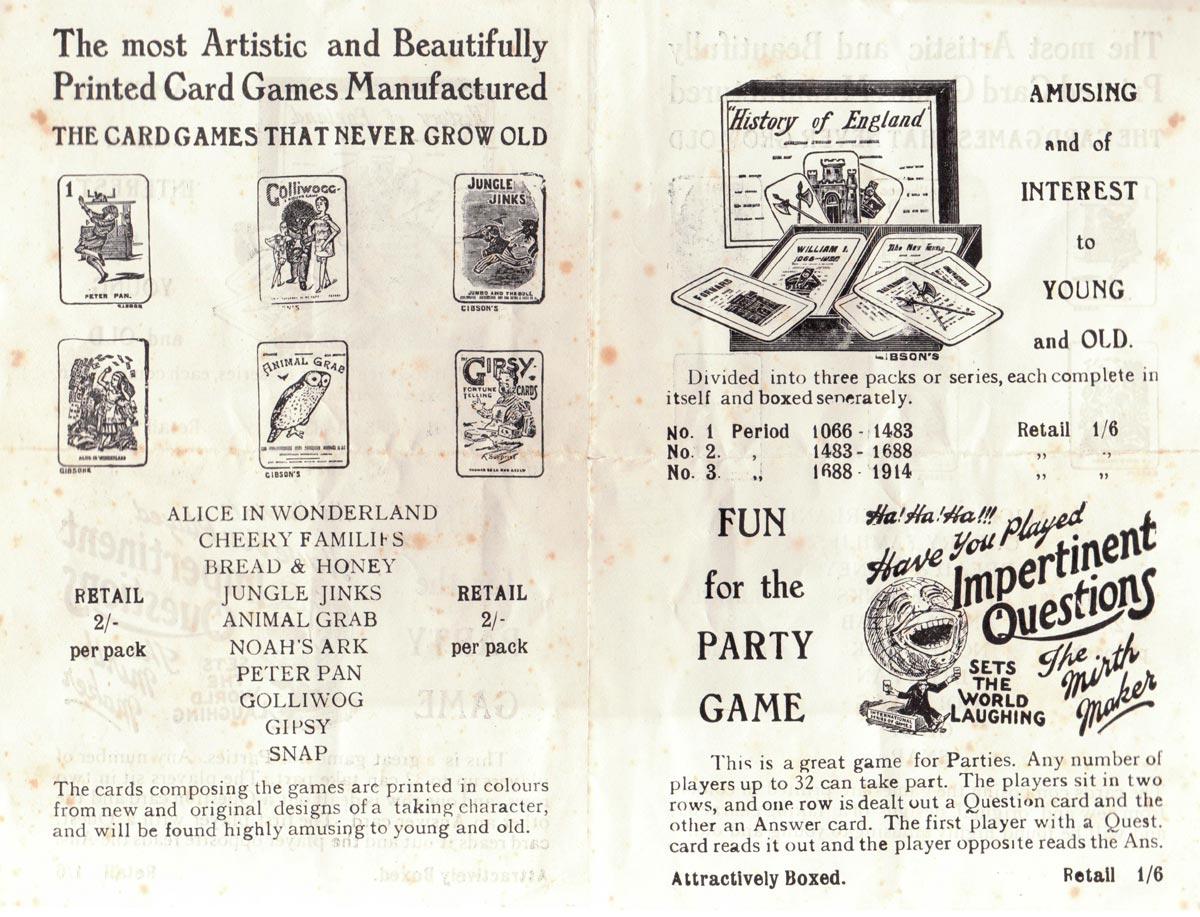
By Rex Pitts (1940-2021)
United Kingdom • Member since January 30, 2009
Rex's main interest was in card games, because, he said, they were cheap and easy to get hold of in his early days of collecting. He is well known for his extensive knowledge of Pepys games and his book is on the bookshelves of many.
His other interest was non-standard playing cards. He also had collections of sheet music, music CDs, models of London buses, London Transport timetables and maps and other objects that intrigued him.
Rex had a chequered career at school. He was expelled twice, on one occasion for smoking! Despite this he trained as a radio engineer and worked for the BBC in the World Service.
Later he moved into sales and worked for a firm that made all kinds of packaging, a job he enjoyed until his retirement. He became an expert on boxes and would always investigate those that held his cards. He could always recognize a box made for Pepys, which were the same as those of Alf Cooke’s Universal Playing Card Company, who printed the card games. This interest changed into an ability to make and mend boxes, which he did with great dexterity. He loved this kind of handicraft work.
His dexterity of hand and eye soon led to his making card games of his own design. He spent hours and hours carefully cutting them out and colouring them by hand.

Leave a Reply
Your Name
Just nowRelated Articles
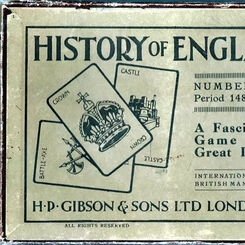
Gibson’s History of England
History without tears for young and old, 1920s.

Lever Brothers miniatures
Two miniature card games promoting Vim Scouring Powder and Sunshine Soap, 1930s.
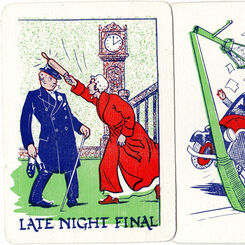
Biff! Bang!! Wallop!!!
Biff! Bang!! Wallop!!! family card game published by H.P. Gibson & Sons Ltd, 1939.
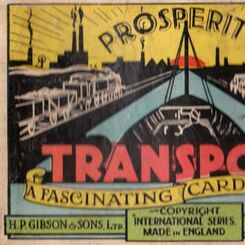
Transport
Transport card game published by H.P. Gibson & Sons Ltd in mid-1930s.
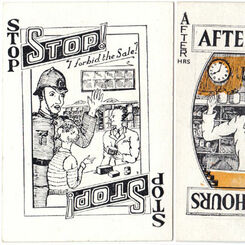
Stop! I forbid the Sale!
“Stop! I forbid the Sale!” card game published by H.P. Gibson & Sons Ltd, c.1939.
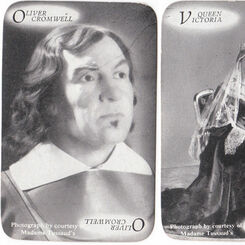
Have A Go
Have A Go card game published by Photo-Briton Ltd featuring photographs of waxwork figures from Mada...
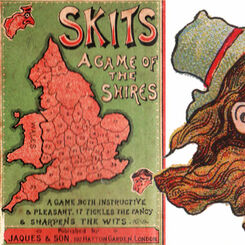
Skits
Skits, an instructive card game which sharpens the wits, c.1900.
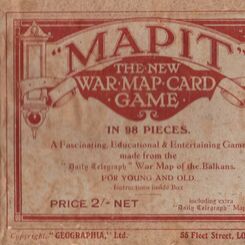
Mapit
“Mapit” war map card game published by Geographia Ltd, 55 Fleet Street, London E.C., c.1940s.
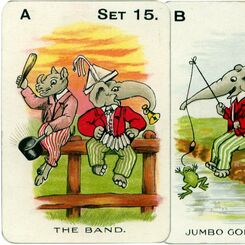
Jungle Jinks
Jungle Jinks card game with artwork by Constance Stannard Chapman, manufactured by Thomas De La Rue ...

Peter Pan
“Peter Pan” pictorial card game published by H. P. Gibson & Sons in c.1912 and manufactured by Thoma...
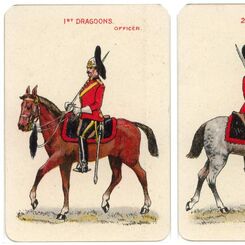
Cavalry Game
The “Cavalry Game” manufactured by Thomas de la Rue & Co Ltd, c.1900-10.
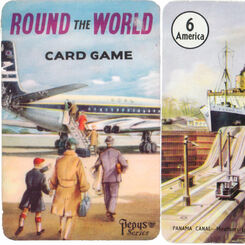
Round the World
Round the World card game published by Pepys, 1961.
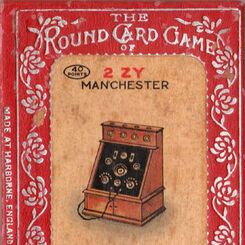
Sparx
‘Sparx’ card game, or ‘Listening In’, published by Chad Valley Games, c.1925.
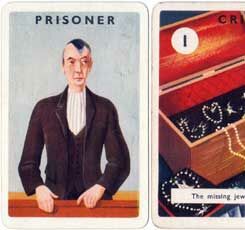
Alibi
“Alibi” the thrilling card game by Haytor, Tor Productions, 1930s.
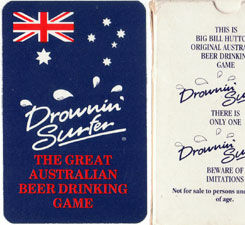
Drownin’ Surfer
Drownin’ Surfer card game
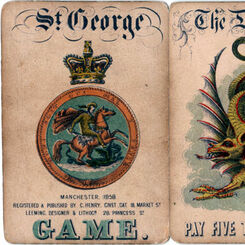
St George Game
St George Game, 1858, depicting St George and other saints engaged in battle slaying the dragon to s...
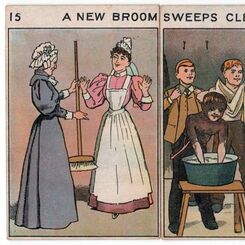
Picture Proverbs
Picture Proverbs was a Victorian card game illustrating popular proverbs which were seen as words of...
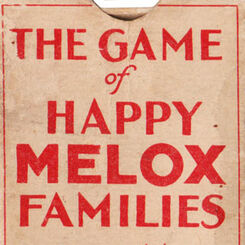
Happy Melox Families
The “Game of Happy Melox Families” was published by G. Clarke & Son of Thomas Street, London, in 192...
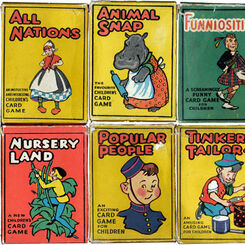
Waddy Productions
Waddy Productions Ltd was a member of the giant Amalgamated Press group and only published card game...

Caught in a Trap
A Victorian card game telling a story of a victim being ensnared in a trap, being caught, and finall...
Most Popular
Our top articles from the past 60 days


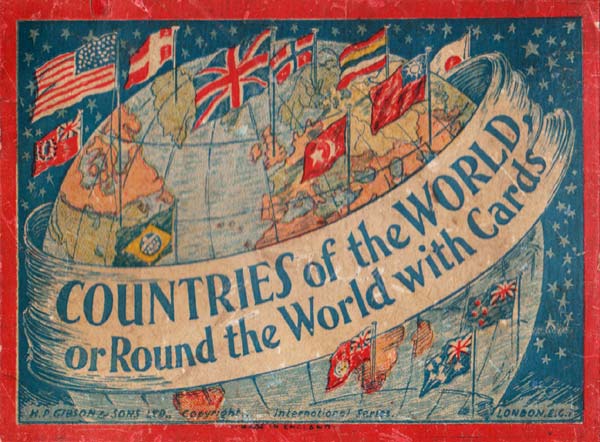
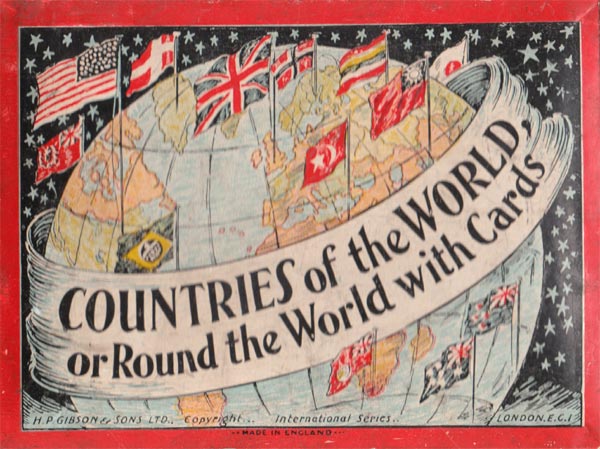
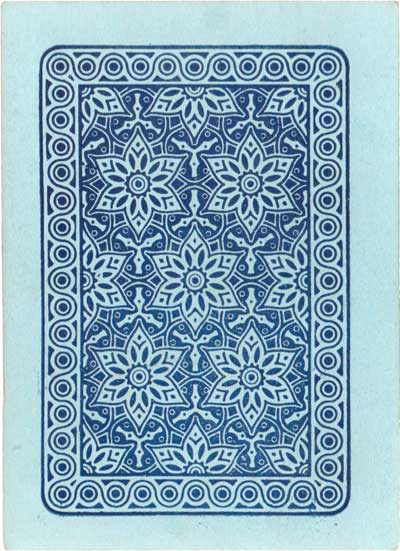

 Your comment here. Your comment here. Your comment here. Your comment here. Your comment here. Your comment here. Your comment here. Your comment here. Your comment here. Your comment here. Your comment here. Your comment here. Your comment here. Your comment here. Your comment here. Your comment here. Your comment here. Your comment here. Your comment here. Your comment here. Your comment here. Your comment here. Your comment here. Your comment here. Your comment here. Your comment here. Your comment here. Your comment here. Your comment here. Your comment here. Your comment here. Your comment here.
Your comment here. Your comment here. Your comment here. Your comment here. Your comment here. Your comment here. Your comment here. Your comment here. Your comment here. Your comment here. Your comment here. Your comment here. Your comment here. Your comment here. Your comment here. Your comment here. Your comment here. Your comment here. Your comment here. Your comment here. Your comment here. Your comment here. Your comment here. Your comment here. Your comment here. Your comment here. Your comment here. Your comment here. Your comment here. Your comment here. Your comment here. Your comment here.




















